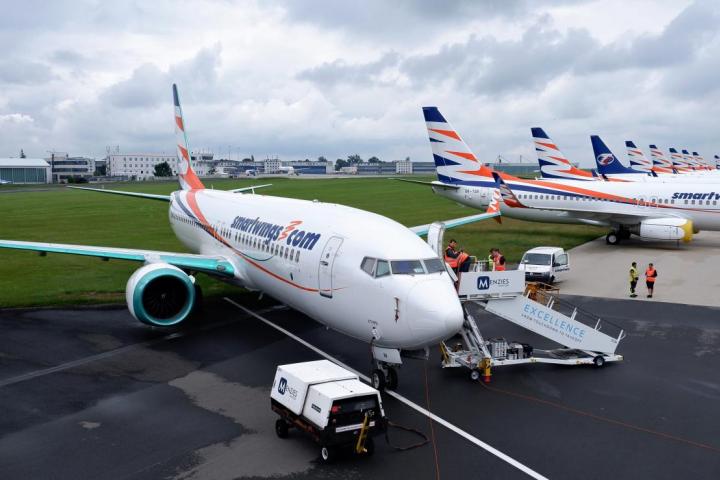
The aim of the interference was to determine the behavior of aircraft avionics, especially the Multi-Mode Receiver (MMR) in the presence of an interfering signal and the impact of providing such degraded position information on messages transmitted by ADS-B (Automatic Dependent Surveillance - Broadcast). The measurements were performed on a Smartwings Boeing 737 Max aircraft on a stand at the threshold of runway 22 simulating several scenarios involving different elevations of the jammer relative to the GNSS aircraft antenna and different power of the jamming signal.
The event was carried out in cooperation with Smartwings, a.s. without their support, helpful approach and dedicated help from employees, the measurement could not be carried out. It was also supported and approved by Prague Airport, which provided entourage and supervision of activities around the aircraft, and by the Air Traffic Control of the Czech Republic, sp, which issued a NOTAM informing about interference, and could not take place without borrowed lifting platforms from Czech Airlines Technics, and borrowed GNSS signal jammers from the National Office for Cyber and Information Security and Air Traffic Control of the Czech Republic. The measurement did not restrict normal operation of the airport.
The measurement was part of a project entitled Research into the Influence of GNSS Signal Interference in Aviation (CK01000183) supported by the Technology Agency of the Czech Republic in the first public tender of the TRANSPORT 2020+ program. The project is solved in cooperation with the Czech Technical University in Prague and the GNSS Center of Excellence, z.s.p.o., and deals with the issue of how to ensure and improve the safety of the use of GNSS in aviation. Its aim is to increase security of the use of the GNSS signal in aviation by researching and finding new ways to quickly and effectively detect GNSS signal interference and to better identify the extent and danger of such interference.
Source: Institute of Air Transportation, Faculty fo Transportation Technology, CTU in Prague
